Atlassian Stock: Great Software Company, But Hugely Overvalued (NASDAQ: TEAM)
Seiya Tabuchi/iStock via Getty Images
There are companies that, even if you like them, you can’t justify paying the valuation they are trading at. This is the case for us with Atlassian Corporation (NASDAQ: TEAM), Which one is a company we admire but find grossly overvalued.
For those unfamiliar with the company, Atlassian is the developer of several popular software tools, primarily for team collaboration. In fact, Atlassian aims to “unleash the potential of teams” by improving planning, project management and workflows. Atlassian’s original product is Jira, which was developed as a workflow solution for SW developers. Other popular software tools offered by Atlassian include Confluence, a collaboration tool, and Trello, an Agile planning tool.
Addressable market
More than 75% of Fortune 500 companies use Atlassian products, and growth in its largest customer cohorts outpaces overall revenue growth. The company estimates its total addressable market to be approximately $29 billion, made up of approximately half technical teams such as software developers, and the other half non-technical teams such as HR, accounting, etc.
Presentation to Atlassian Investors Presentation to Atlassian Investors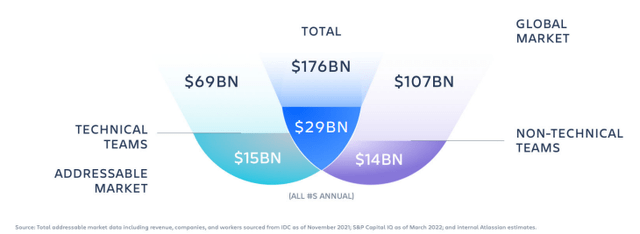
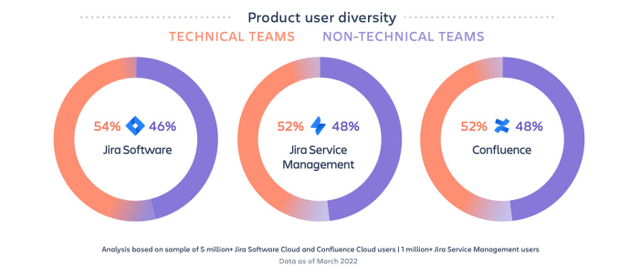
business model
To target this market, Atlassian uses a direct-to-market strategy that favors low-cost, self-service options over having a traditional enterprise sales force. Thanks to this strategy, its sales and marketing expenses are among the lowest among its enterprise software peers. The company believes that making a great product that is also easy to use is the best marketing, and it drives word-of-mouth and viral adoption. In fact, Atlassian likes to say that they believe software should be bought, not sold. This belief is the basis of their flywheel business model, which starts with more investment in R&D compared to their peers. Early on, rather than building a traditional sales organization, Atlassian decided to invest in creating a self-service shopping experience. By removing friction points, Atlassian is attracting customers of all sizes at scale, having added more than 50,000 net new customers in the past year alone.
Presentation to Atlassian Investors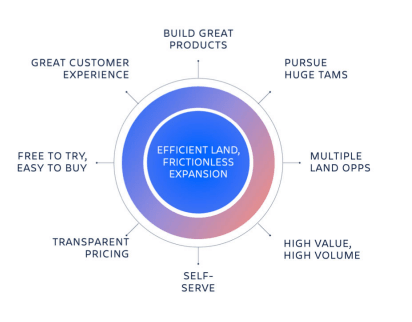
Another key part of Atlassian’s business strategy is to make products sticky. One of the ways they achieve this, for example, is by enabling integration with third-party tools and apps from the Atlassian Marketplace. When customers add at least one app or integration in Jira Software, for example, the dollar churn rate drops by about half. This is because integrations and apps create a network effect. With each new connection, their products become more integrated into the customer’s workflows.
finance
Atlassian is no longer a startup, it has a massive market capitalization of around $52 billion. It’s quite remarkable that this huge valuation is placed in a handful of business apps, no matter how popular.
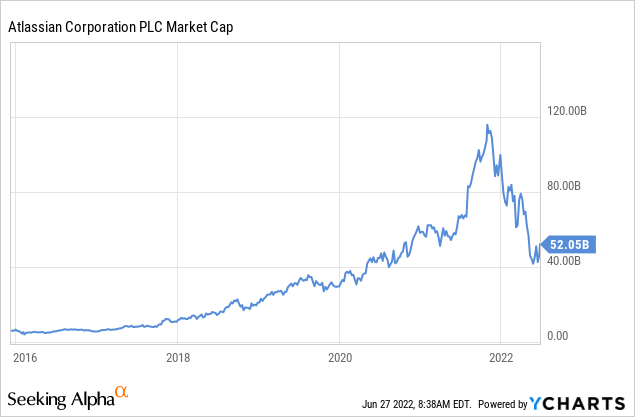
Atlassian has a very attractive gross profit margin of over 80%, but despite this, it has shown relatively low operating leverage. There was some operating leverage in general and administrative expenses, but sales and marketing and R&D remained essentially at the same percentage levels of revenue.
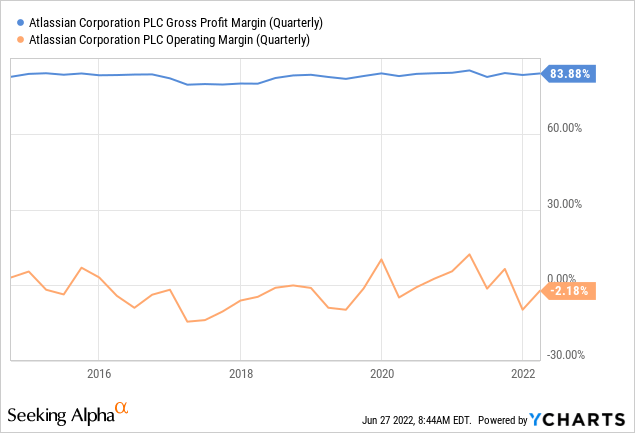
We admire that Atlassian spends so much on R&D, and that’s why we’re optimistic that its growth rate will remain high for a long time. Compared to a group of its peers that includes Adobe (ADBE), Salesforce (CRM) and Zoom (ZM) among others, Atlassian is by far the company that spends the most on R&D as a percentage of its revenue.
Presentation to Atlassian Investors
The reverse is the case for sales and marketing, where Atlassian is the company with the lowest spend as a percentage of revenue of the entire group.
Presentation to Atlassian Investors
It is impressive that despite these low sales and marketing expenses, the company has still managed to generate very attractive revenue growth rates. Since its IPO, revenue growth has averaged around 36%, but has been a little weaker recently – closer to 30%.
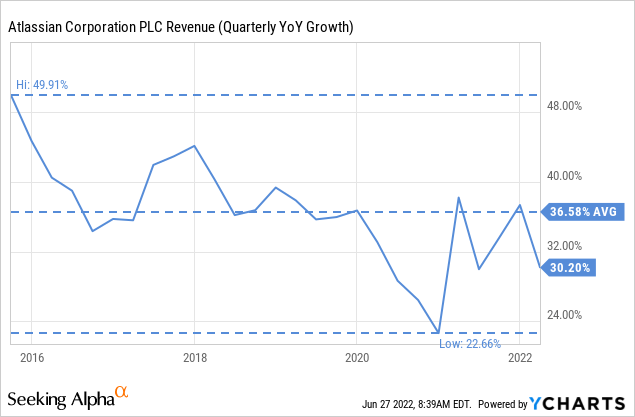
Free cash flow grew even a little faster than revenue, with free cash flow growing at an impressive CAGR of 43%. We caution investors that we will subtract stock-based compensation from free cash flow figures. Although stock-based compensation is a non-cash expense, we believe it is a very real expense and should be considered when evaluating “owner benefits”.
Presentation to Atlassian Investors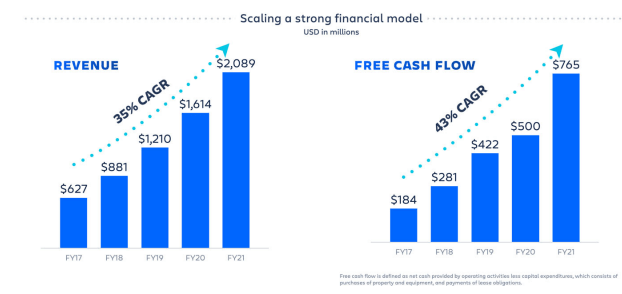
Unfortunately for Atlassian shareholders, equity compensation has been incredibly high, reaching $637 million over the past twelve months. This would wipe out most of the free cash flow generated by the business over the past year if subtracted.
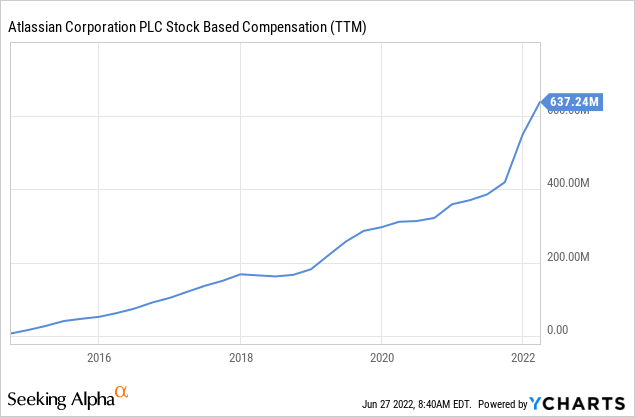
Evaluation
Despite the decline in share price, stocks are still trading at a very high EV/Earnings ratio. It’s EV/Revenue, not EV/EBITDA. Investors are willing to pay around 20 times the company’s sales, despite it no longer being a hyper-growth startup.
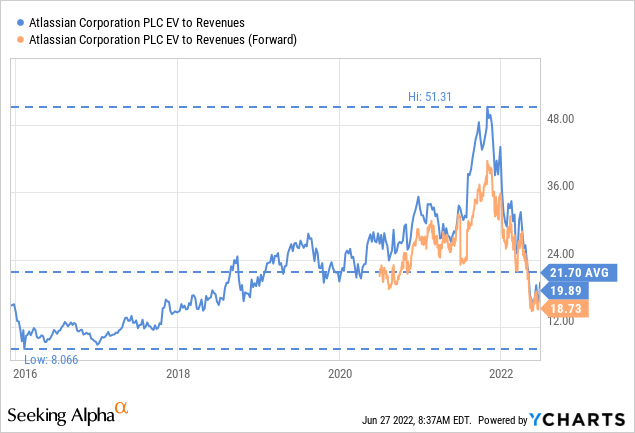
Forward EV/EBITDA is no longer triple digits, but still quite expensive at ~76x.
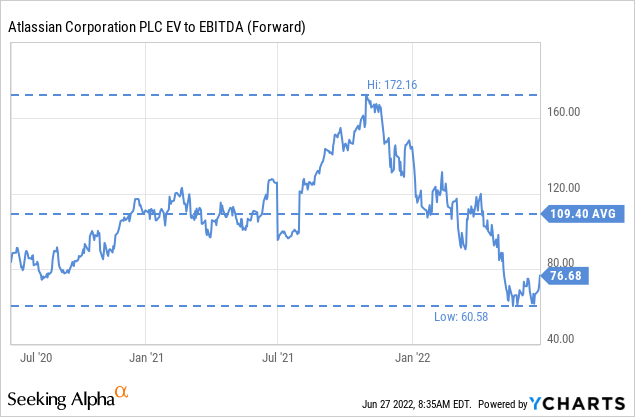
The same cannot be said for the price/earnings ratio, of which even the forward PER remains in the triple digits at ~121x.
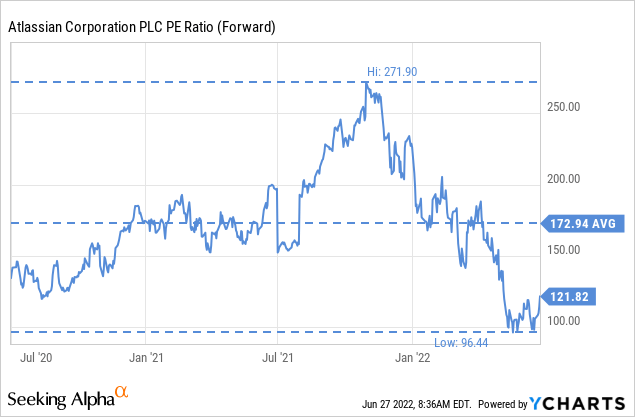
Conclusion
We believe Atlassian has one of the strongest and most attractive business models in the enterprise software industry. That said, investors really have to pay if they want to buy the shares. With a forward P/E still in the triple digits, a market capitalization that exceeds $50 billion and an EV/Earnings multiple close to 20x, we think it is better to avoid equities despite the attractiveness of the underlying activity. Especially considering the massive amounts of stock-based compensation. We’ll have to keep this one on the watch list, and we don’t expect it to hit our “Buy” price anytime soon.


Comments are closed.